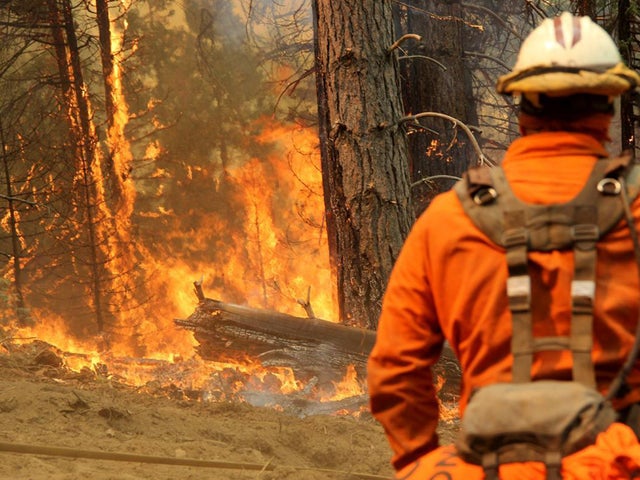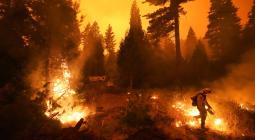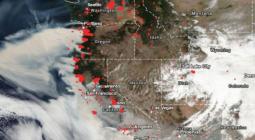Severe forest fires have increased eightfold in western US since 1985, study finds.

Exclusive: The amount of land burning at ‘high severity’ is also accelerating due to climate change, researchers say.
The number of severe forest fires across the western US has increased eightfold in the past 35 years, a study has found.
The rise in area burned by high-severity fires is linked to hotter and drier weather across the region, said scientists.
Researchers expect the frequency of blazes will continue to increase as such conditions are becoming more likely and more extreme as a result of the climate crisis.
The area burned at high severity across the western US accelerated between 1985 and 2017, the study’s lead author Dr Sean Parks, a research ecologist at the United States Forest Service, told The Independent.
“Given the observed relationships between all annual fire metrics and fire season climate, it is reasonable to expect that continued climate change will result in increased annual area burned at high severity,” he added.
The findings come as the country waited to learn the results of the US general election in which the climate crisis – and how the government should be responding to its impacts – has been a major talking point.

Published in Geophysical Research Letters, the research looks specifically at how the area burned by high-severity fires has changed across the western US, rather than just how the total number of all fires has changed.
To do this, Dr Parks and his colleague made use of field measurements and satellite data spanning 1985 to 2017. Using modelling, they analysed this data to pinpoint high-severity fires, which were classed as those in which a large proportion of a forest’s trees are destroyed. In low-severity fires, much of the forest remains intact.
The scientists excluded fires that had been started by “prescribed burning”. This is when fires have been started intentionally as part of a fire management control technique.
Understanding changes to the number of severe fires is important because severe fires can have a larger impact on ecosystems, and pose a greater danger to humans, said Dr Cristina Santin, a wildfires researcher at Swansea University who was not involved in the research.
She told The Independent: “Generally speaking, the more severe a fire is, the higher the impact on the ecosystem, and also the higher the impact on humans, if humans are around.
“If you have a huge ground fire that is burning very fast and very intensely, it’s more probable that fire suppression can’t stop it from reaching a village or town and killing people.”
This year’s record-breaking fire season in the western US saw dozens of large and intense fires break out across the states of California, Oregon and Washington. This included the country’s first “gigafire” – a fire that burned through more than one million acres of land.
Ten of the 20 most destructive fires recorded in California have occurred in the past five years.

(Rex)
While the new study only spanned fires from 1985 and 2017, Dr Parks said it was likely that the rate of increase for area burned at high severity has since continued to climb.
“We don't yet have data on this season's fire severity, so a direct comparison of the 2020 fires to our results is not possible. This said, based on the preliminary reports and observations, the trends reported in our study most likely continued into 2020," he said.
“Although having the 2020 data in hand would be preferable prior to speculating, it is likely that 2020 was a record year in terms of forested area burned at high severity in the western US.”
The observed increase in area burned at high severity is linked to increases in hot and dry conditions, the research found.
However, it is possible that historic forest management practices prior to 1985 have also had an impact on the amount of land burned at high severity, said Dr Parks.
“Against the backdrop of longer-term and ongoing fire management practices, we show a strong relationship to climate factors that suggest a significant role played by a changing climate on area burned at high severity," he added.
The climate crisis is making the conditions for fire more likely across the world.
A review of more than 100 scientific studies conducted by the research group Science Brief earlier this year concluded that the increase in “fire weather” observed around the globe is closely linked to rising temperatures and changes to rainfall patterns, as well as increases in the frequency and severity of heatwaves and droughts.
5 November 2020
INDEPENDENT




